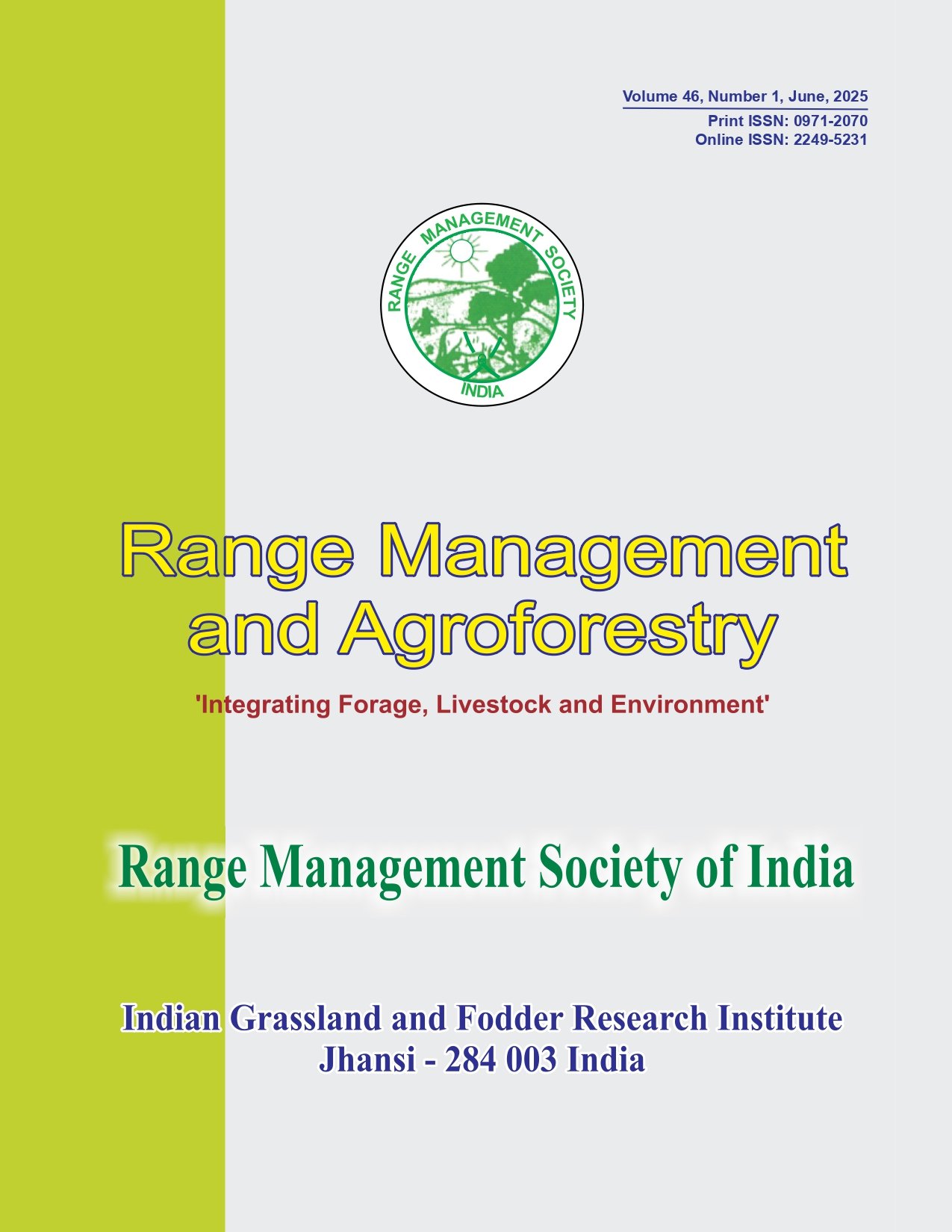Genetic parameters, correlation and path analysis for fodder and dual purpose sorghum [Sorghum bicolor (L.) Moench] genotypes
DOI:
https://doi.org/10.59515/rma.2024.v45.i1.06Keywords:
Sorghum, GCV, PCV, Heritability, Genetic gain, Correlation and PathAbstract
About 60 diverse sorghum genotypes were evaluated to assess the genetic parameters, association among fodder and grain yield component traits and their direct and indirect effects on grain yield. The experiment was conducted in randomized block design at Instructional Farm, Department of Genetics and Plant Breeding, Rajasthan College of Agriculture (MPUAT), Udaipur in collaboration with AICRP on Sorghum. Analysis of variance revealed highly significant differences among the genotypes for all 14 traits studied. In the present investigation range of the magnitudes of all genetic parameters for each trait was classified based on mean and standard deviation (SD) into three categories viz., high (> ), medium (in between ) and low (< ). Traits viz., total soluble solids (%), grain yield per plant (g), leaf breadth (cm) and dry fodder yield per plant (g) were the most approachable for selection as they had higher GCV, PCV, genetic gain and moderate to high heritability in a broad sense. Hence, simple selection could be effective for further improvement of these characters. Based on correlation and path analysis, the traits, dry fodder yield per plant, harvest index, green fodder yield per plant, leaf breadth, protein content and plant height might be considered as indirect selection indices for improvement in grain and fodder yields of sorghum.








